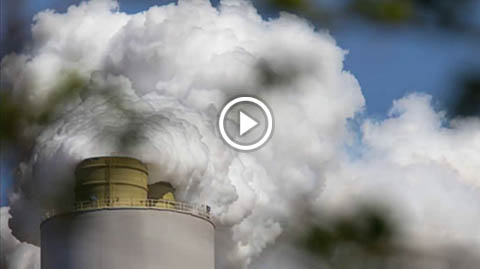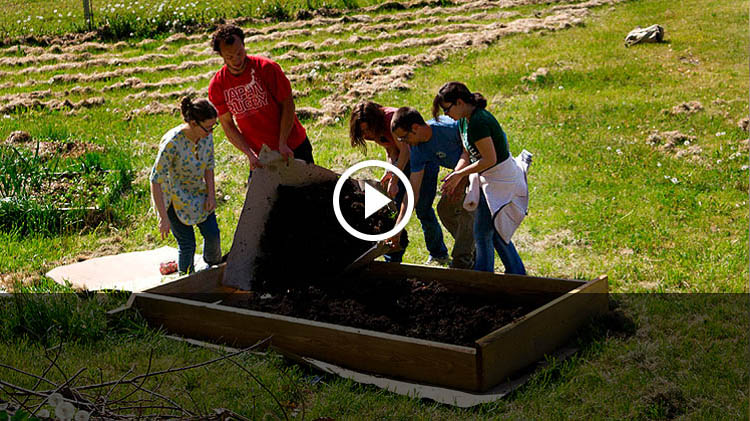

 Our Land, Our Lives
Our Land, Our Lives

We are connected to the places we live — they affect, in no small way, how our existence unfolds. In Southeast Ohio, the connection between the people and the land is long and colorful. The early inhabitants saw the region as a unique utopia and sought to live in harmony with it. Later residents saw the potential of resources locked beneath the earth and became determined to use them to build a brighter future. New rifts are occurring in local communities, with words like “environment” and “economy” often cropping up in relation to the land. In the end, the distance between us is defined by the different ways in which we view the value of the land we call home.
Traditionally rich with buried resources, Southeast Ohio hosts and has hosted a variety of industries focused on unearthing and processing these resources. But a dichotomy exists between those that value what lies beneath the earth and what can be produced in the soil above.

Well Gavin Power Plant was built back in 1972 to 74. The current issue you are talking about 8 to 10 years ago was them purchasing some property in the Cheshire village area to keep the people from taking them to court over the issue of sulfur and NOx problems in the air.
The things that were coming out of the power plant stacks was coming down on people's property right in the village right underneath the power plant. And it was burning peoples skin, mouth sores, we couldn't have gardens, the food was rotten as soon as it was grown, and it even killed a few people that we think, WE THINK, never proved it, that it contributed to their deaths. I've had two parents that died of cancer and it wasn't nothing caused by the power plant, I've had my grandpa lived here all his life and he died in his upper 80s and it wasn't caused by cancer.
I don't think that what they put in the air would be any worse on you than maybe stuff you put in your mouth to eat." I got a small farm here it is about 60 acres. Living across from the power plant it's had its ups and downs.
When they was first building it you had all the noise you had to put up with driving pylons and of course all the clanking of the barges and stuff, but you get use to it about living next to a train track.
The cable tray over in there is all rusted out, it just eats through any type of metal, rubber, it eats through rubber. The biggest problem is the smoke in the spring time come down here. It blows down in here and you can see a blue haze and the smell gets, the sulfur taste gets in the back of your throat and makes you cough
Well I really don't have any problems with the power company, they create a lot of dust and things like that, but that's, you know, part of the environment here. And uh, I've got... Well we've got about 60 acres here on the farm and it is pretty well surrounded by power company property. We've got plenty of land to hunt on and we don't have any problems with anybody bothering us or the power company or anything. And uh, it's just a good place to live.
The plant works with us now, where the plant use to tell the people what to do. We work with the power plant and they help us each year do something for the village and help us grow a little bit So they are more friendly with us now. Where they use to be more like well they called it a 'David and Goliath situation' and they are no longer a Goliath to us.
In the past, extractive industries coming to the area created an economic boom. That boom, however, traditionally has been followed by bust, with once lively towns becoming shells of their former selves. The residents left behind in these towns are then forced to find a new way to live.

Basically it’s the same boom and bust cycle that goes through all of these industries…if they don’t want to regulate then they won’t give us money to do our jobs and so then what?
The boom-bust cycle of extractive industry in Southeast Ohio, and the impact it can have on the people who live here, has not gone unnoticed. In response to the issue, multiple approaches and outlooks have developed. From grassroots activists fighting to alter individual paradigms, to successful business owners working to address the same perceived problems institutionally. Though they approach it from different angles, both camps seek to sow seeds of change.

I'm a utopian. I'm an anarchist. I really like permaculture. My name's Badger Johnson, I'm the community gardens and food education coordinator with CFI, Community Food Initiatives. And I thought I might just move out of the country and start farming after college, but when the opportunity to continue to organize and get paid and make more connections and learn more skills came around, then I was just like, "Yes!"
We are trying to come up from the grassroots to help people out. That's why we do it, teaching people to be able to rely on themselves for food. Connecting the dots for people is the work of a community organizer and sort of stitching together the story of a community.
Several fraternities are volunteering with us this spring and Alpha Phi Omega already came out. Some of them are from the inner city and have never seen a place where food grows. And they were like, 'Whoa, is that a chicken?' I'm like yeah. That's where eggs come from. It's just like 'Whoa!'
How do you address poverty in Appalachia? You know, how can we help ourselves really? Cause there's no one coming to save Southeast Ohio. You have a lot of problems, health problems that go along with that like obesity and type 2 diabetes. And many of those can be changed, can be addressed directly, through eating lots of fresh local vegetables.
There's billions of organisms down there in like a tablespoon of healthy soil. And that's what allows organic gardeners to grow vegetables without putting fertilizer down, is this complex web of life that you nurture. I'm trying to get that paradigm instilled as much as I can in all the community gardens around here, because that sort of care for the earth, and how that translates into care of yourself, if you grow the vegetables is really closing the loop.
It's really painful to see the earth treated in such a destructive and derogatory way as it's been treated here since European colonization. It might sound a little new-age, but I think 'Earth as self' is not too much of a stretch.
Sometimes I feel like we're a drop in the bucket and sometimes like, I feel like, at our best, we are helping people wake up.
What I see when people become more aware of their health and their connection with nature is oftentimes there will be some healing to do. There's a lot of healing that needs to happen and it happens spontaneously if people can just sit with it and do some gardening.
While thoughts of sustainable business models and land-friendly living may be appealing, they are not always feasible. Southeast Ohio is a region wracked with poverty, currently compounded by the national recession. For many, the high material value placed on the land by extractive industries offers life-changing opportunities that would otherwise be unavailable. Hydraulic fracturing, a method of natural gas mining, has been at the forefront of the current debate. Critics label fracking as environmentally devastating and hazardous to people’s health, but proponents laud it as a route toward energy independence and an economic dynamo. The issue creates choices as complex as they are contentious.

There’s no jobs here, so this is pretty much all we got, the land. I think if fracking will bring jobs to southern Ohio it’s a good thing.
Southeast Ohio is at a crossroads. It is now in the hands of the community to decide whether heavy industry offers real change for the region or more of the same. Perspective and personal opinion defines everything from how we value the land, down to how we view it. The challenges to those who call Southeast Ohio home are not simple, nor are the stakes low.
Our views of the land may be different, but our impact is undeniable. Throughout Southeast Ohio, evidence of humanity converges with the Appalachian landscape. We may see our uses of the land as pedestrian, but the natural world probably has a different view of the structures we create. If we take the perspective of nature and imagine what our presence must look like, we begin to see how alien we are in this world that we dominate. Out of the darkness, our creations interrupt the organic landscape constructing eerie encounters within these spaces.